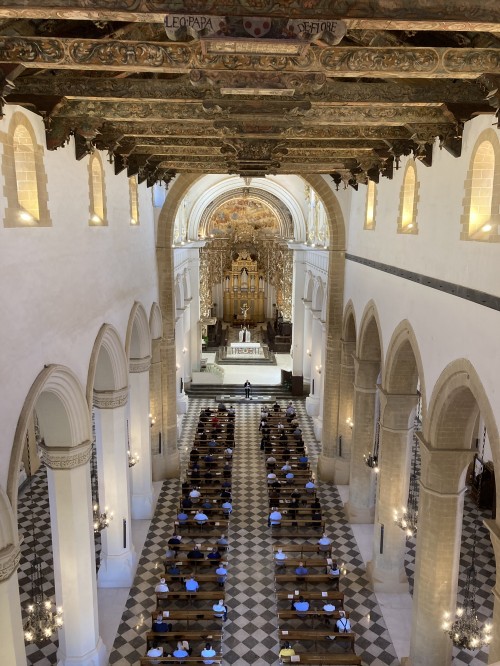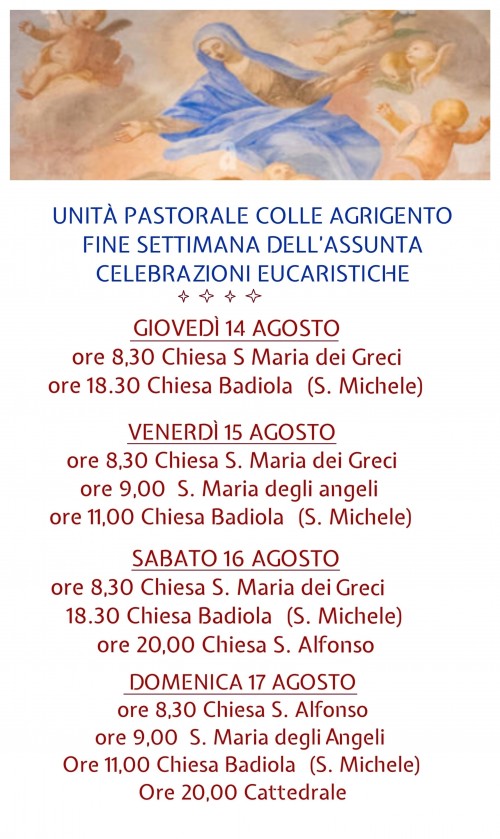The Church of St. Mary of the Greeks located on the same street, on the hill of Girgenti. It corresponds to the ancient temple of Athena or Zeus Atabirios, dating back to Theron. There are traces of this temple foundations and the remains of the cell: a temple peripteral hexastyle, with thirteen columns on the long sides, similar to the Temple of Concordia , which measured 34.70 meters x 15.10. The church is called because of the Greeks, during the Byzantine era, was the cathedral rite greek-orthodox cathedral became Catholic before San Gerlando. The present building dates from the twelfth or thirteenth century. Simple and severe, the façade has a Gothic style reminiscent of the typical architecture Swabian age. The entrance is adorned with a large ogival portal, whose key has a shield. The interior has three naves. The middle one has a wooden ceiling line fourteenth century, painted trusses. On the walls are traces of seven boxes fourteenth-century frescoes, distributed around the figure of a Madonna and Child Enthroned went partly destroyed. It is the so-called Madonna del latte with an explicit reference to the Church depicted in Mary, indicated by the child as a source of grace. The seven panels representing scenes from the life of Mary. The two remaining are: The Vision of St. Joachim on the Mount , in which an angel appears, announcing the next motherhood of St. Anne, and the Presentation of Mary in the Temple . The church contains a marble sarcophagus in 1570, which contains the bones of two noble Palermo: Bartolomeo Caputo Terms and Isabella. During the last restoration, were found the crypt and the gully of the nineteenth century, where members of the Brotherhood of Santa Maria dei Greeks were allowed to dry, sitting before burial. The chairs are made from the living rock below the level of the floor of the cell of the temple.

